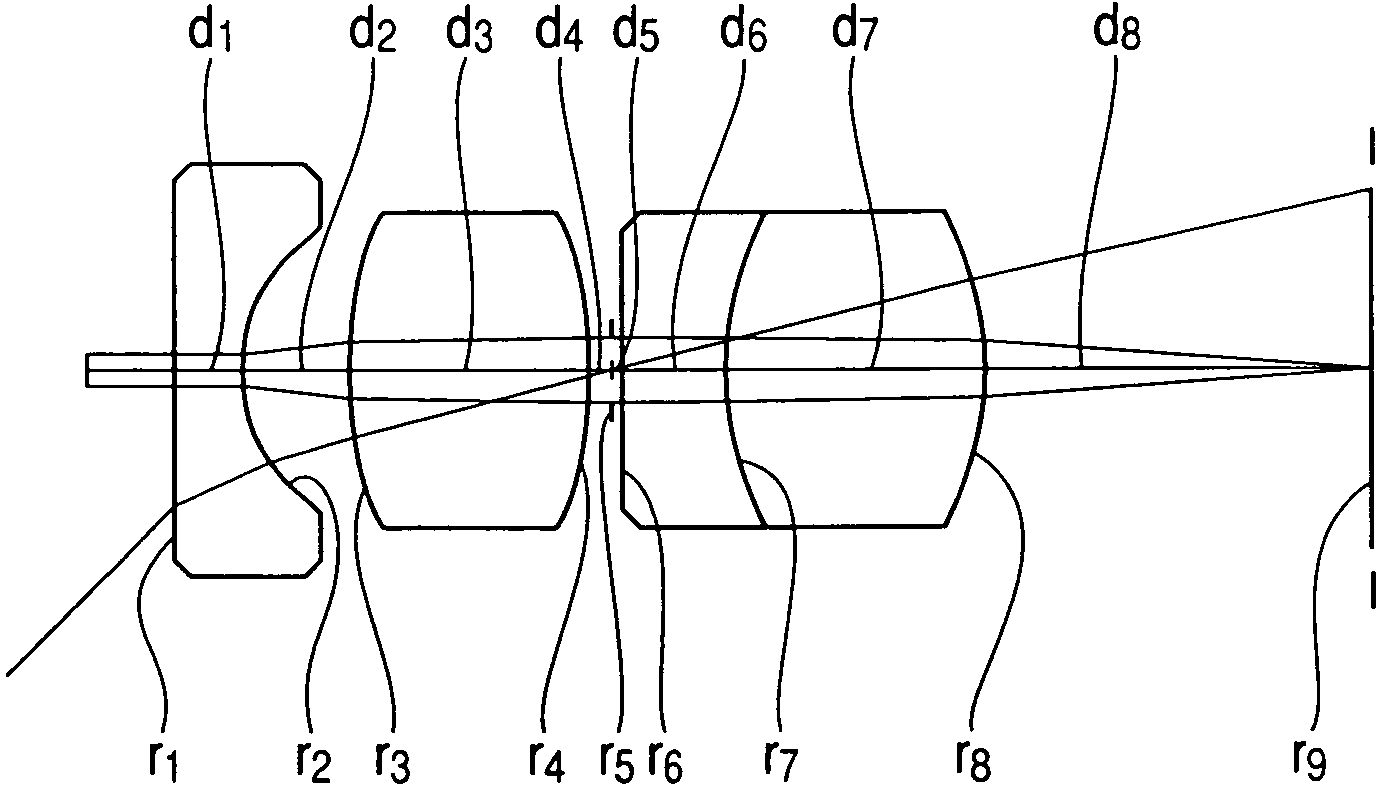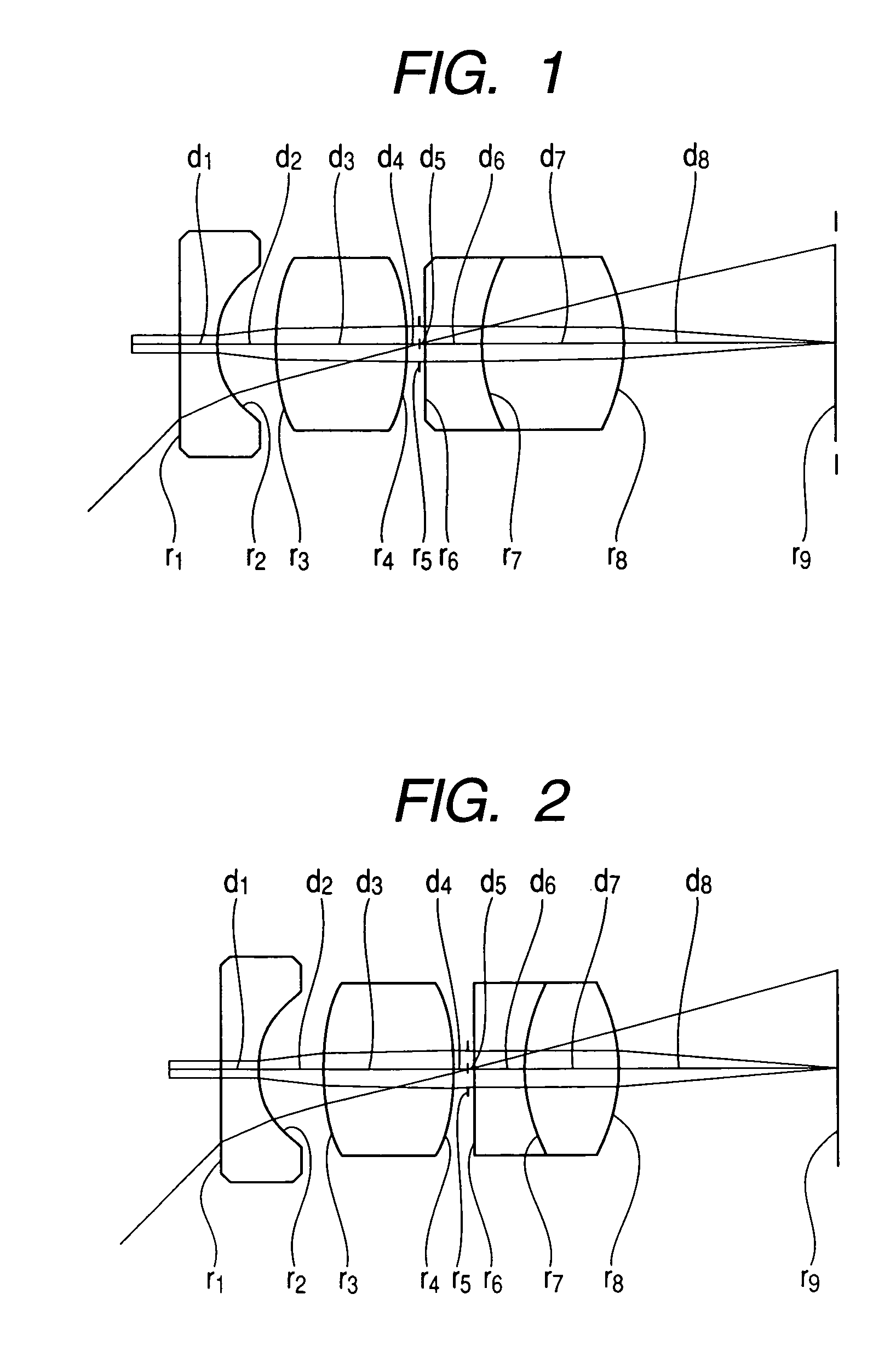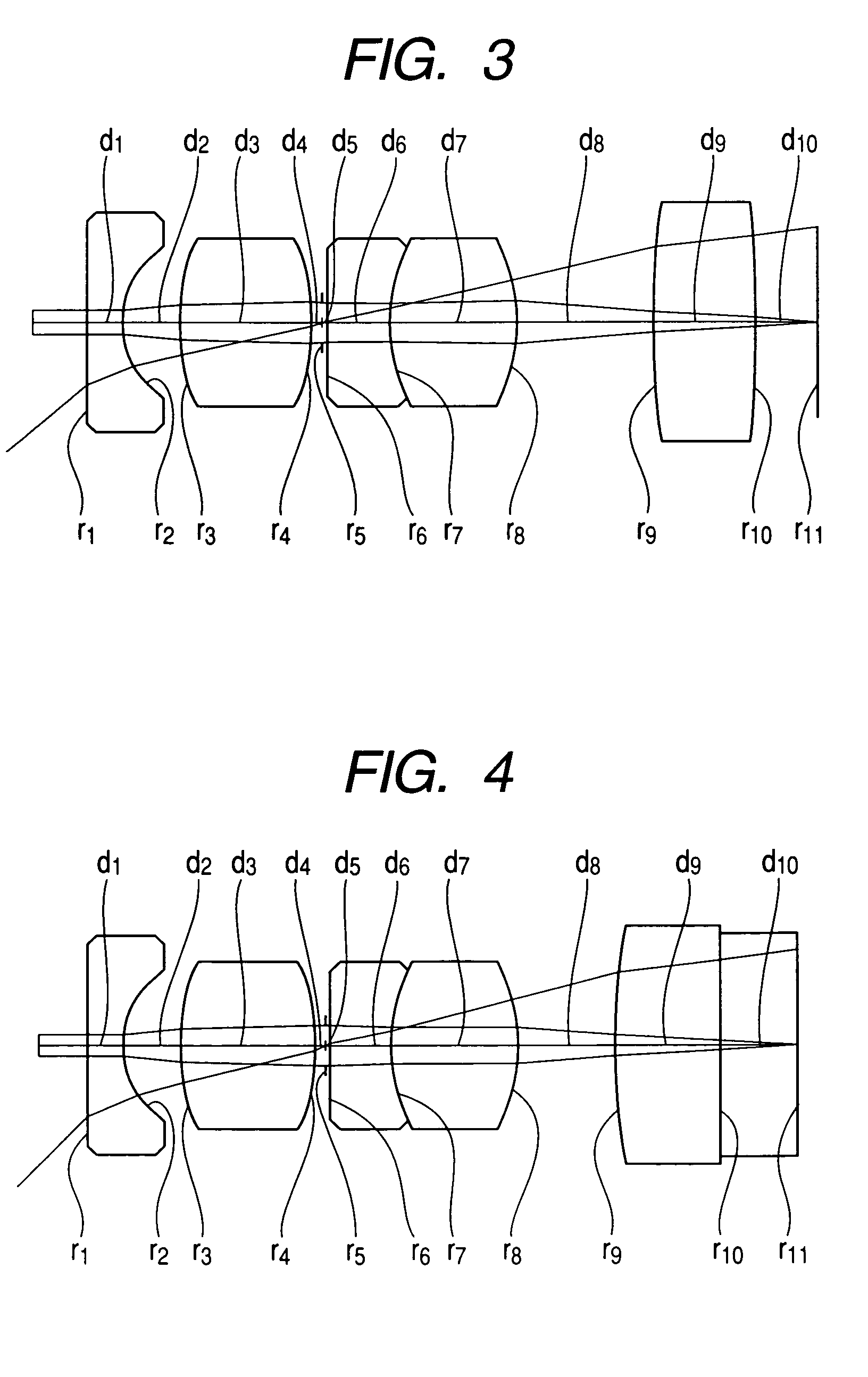Objective lens system for endoscope
a technology of endoscope and objective lens, which is applied in the field of objective lens system for endoscope, can solve the problems of further enlarge the total length of the optical system, and achieve the effects of stable mechanical and chemically, low dispersion, and excellent shock resistance and chemical resistan
- Summary
- Abstract
- Description
- Claims
- Application Information
AI Technical Summary
Benefits of technology
Problems solved by technology
Method used
Image
Examples
first embodiment
[0055]The objective lens system according to the present invention has a composition illustrated in FIG. 1, or consists of a first negative lens element (r1 to r2) which is a plano-concave lens element, a second positive lens element (r3 to r4) which is a biconvex lens element, an aperture stop (r5) and a cemented lens component consisting of a third negative lens element (r6 to r7) which is a plano-concave lens element and a fourth positive lens element (r7 to r8) which is a biconvex lens element in order from the object side. In addition, a reference symbol r9 used in FIG. 1 represents an image surface.
[0056]The first embodiment satisfies the conditions (1), (2), (5) and (4) or the conditions (1-1), (5-1) and (4-1) as shown in the above table.
second embodiment
[0057]The objective lens system according to the present invention has a composition illustrated in FIG. 2, or consists in order from the object side of a first negative lens element (r1 to r2) which is a plano-concave lens element, a second positive lens element (r3 to r4) which is a biconvex lens element, an aperture stop (r5), and a cemented lens component consisting of a third negative lens element (r6 to r7) which is a plane-concave lens element and a fourth positive lens element (r7 to r8) which is a biconvex lens element. In addition, a reference symbol r9 used in FIG. 2 represents an image surface.
[0058]The second embodiment satisfies the conditions (1), (2), (5), (4), (1-1), (2-1), (5-1) and (4-1) as shown in the above table.
third embodiment
[0059]The objective lens system according to the present invention has a composition illustrated in FIG. 3, or consists of a first negative lens element (r1 to r2) which is a plano-concave lens element, a second positive lens element (r3 to r4) which is a plano-convex lens element, an aperture stop (r5), a cemented lens component consisting of a third negative lens element (r6 to r7) which is a biconcave lens element and a fourth positive lens element (r7 to r8) which is a biconvex lens element, and a fifth positive lens (r9 to r10) which is a biconvex lens element in order from the object side. By the way, a reference symbol r11 used in FIG. 3 represents an image surface.
[0060]The third embodiment satisfies the conditions (1), (2), (3) and (4) or the conditions (1-1), (3-1) and (4-1) as shown in the above table.
PUM
 Login to View More
Login to View More Abstract
Description
Claims
Application Information
 Login to View More
Login to View More - R&D
- Intellectual Property
- Life Sciences
- Materials
- Tech Scout
- Unparalleled Data Quality
- Higher Quality Content
- 60% Fewer Hallucinations
Browse by: Latest US Patents, China's latest patents, Technical Efficacy Thesaurus, Application Domain, Technology Topic, Popular Technical Reports.
© 2025 PatSnap. All rights reserved.Legal|Privacy policy|Modern Slavery Act Transparency Statement|Sitemap|About US| Contact US: help@patsnap.com



